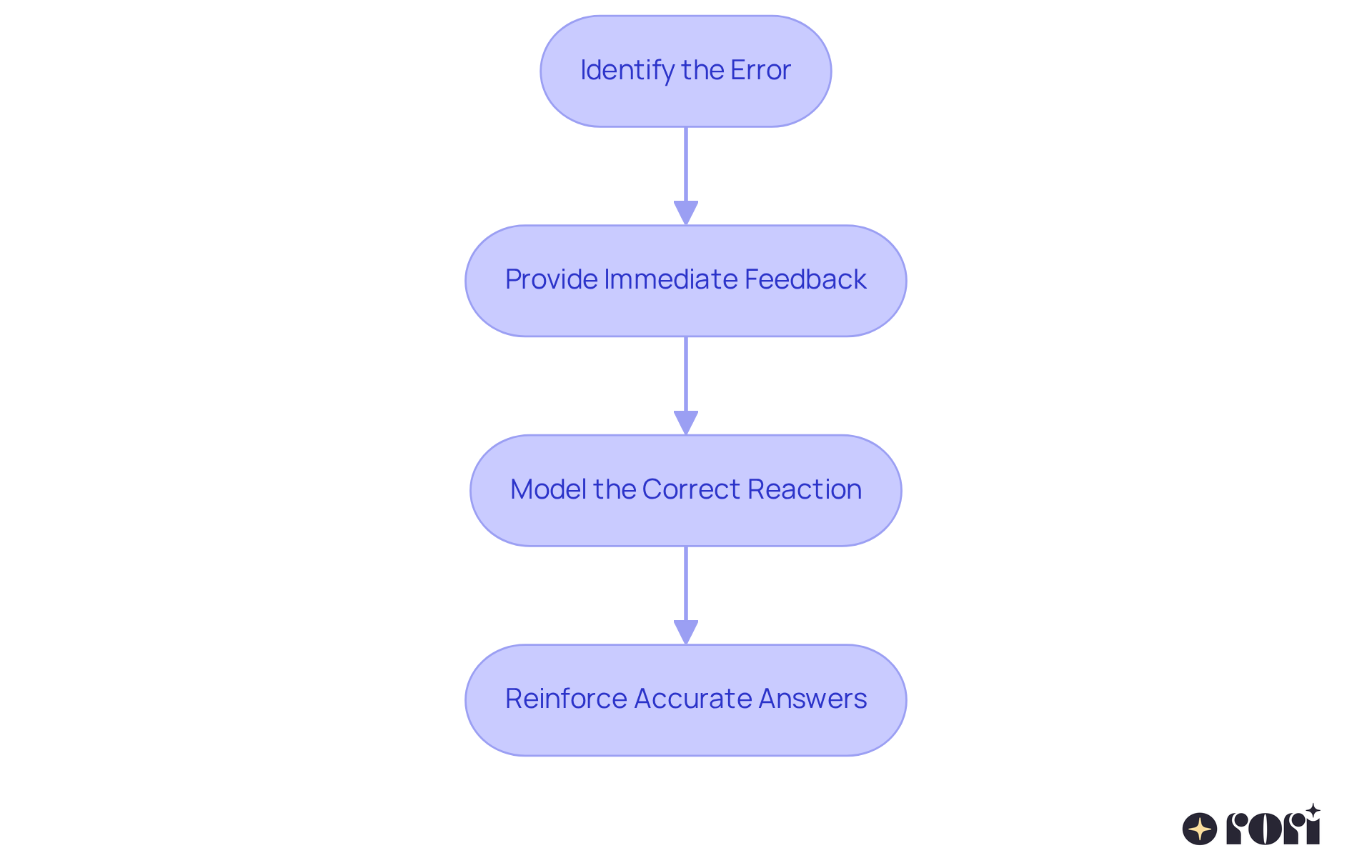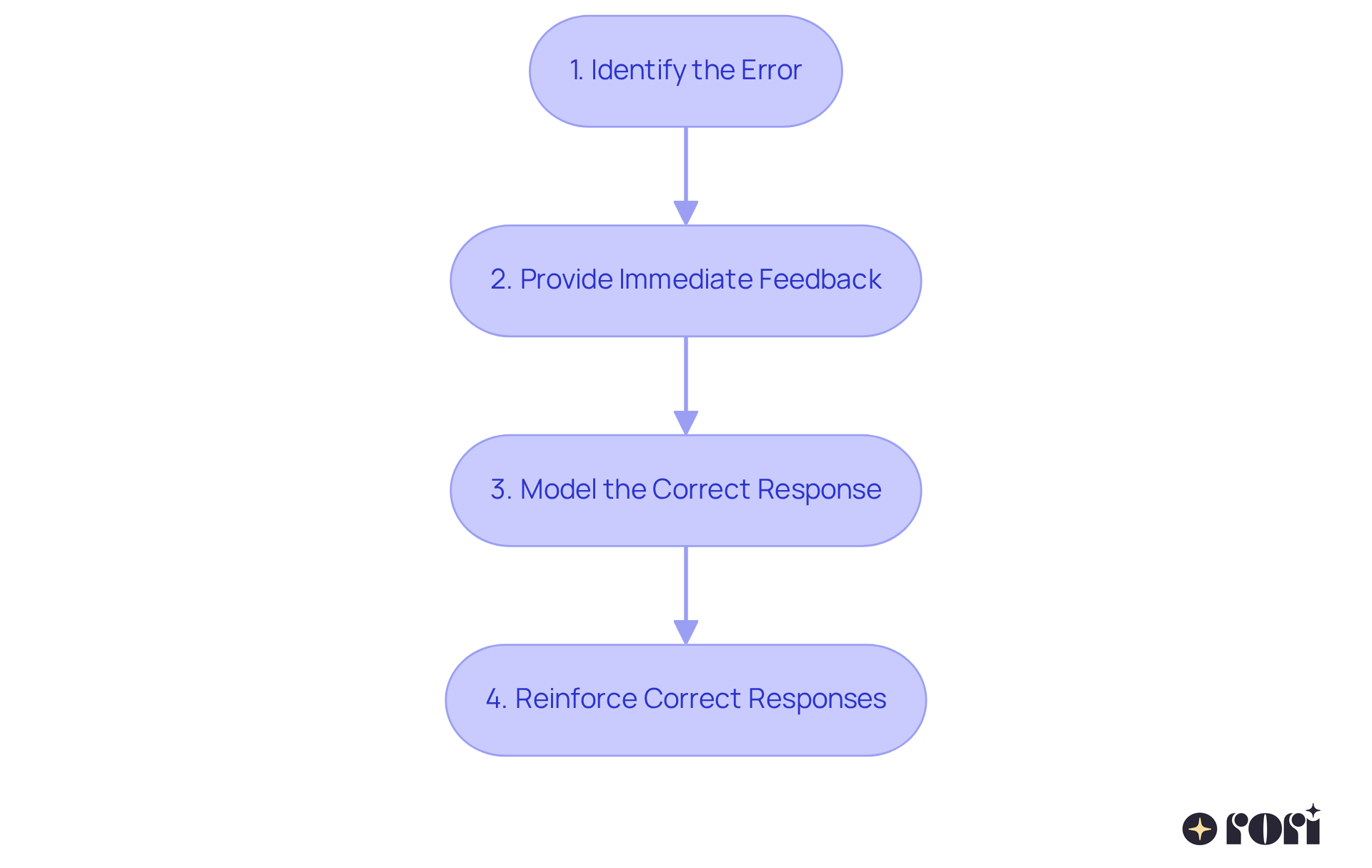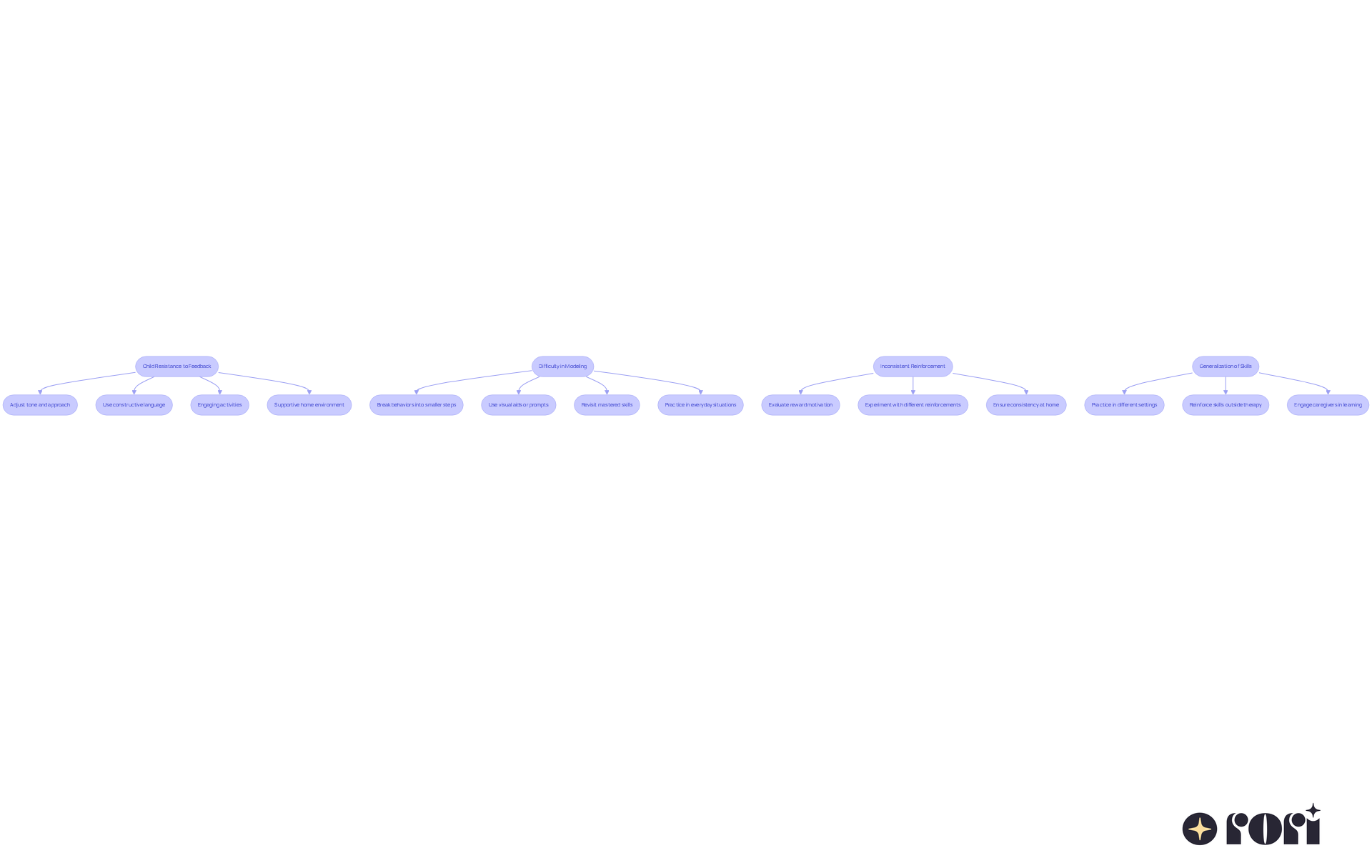The 4-step error correction procedure in Applied Behavior Analysis (ABA) is designed to support parents like you! It starts with:
This approach not only enhances therapy effectiveness but also empowers you to actively participate in your child's learning journey.
Each step is backed by research and practical strategies, making it easier for you to engage with your child. By doing so, you can improve educational outcomes and foster behavioral development together. Let’s explore this together and see how these steps can make a real difference in your child's life!
Understanding how to effectively correct errors during therapy can truly enhance a child's learning experience. The 4-Step Error Correction Procedure in Applied Behavior Analysis (ABA) provides a structured approach that not only addresses mistakes but also empowers caregivers to actively participate in their child's development. 🌱 However, many caregivers face challenges in implementing this procedure effectively. What strategies can we use to ensure that the error correction process is efficient and supportive, creating an environment where young learners can thrive?
Let’s explore this together! We all know that navigating the world of therapy can feel overwhelming at times. But with the right tools and support, we can make a real difference in our children's lives. By sharing experiences and strategies, we can build a community that uplifts and encourages one another. We’re here to help you every step of the way!
The 4-step error correction procedure ABA is a systematic approach used in Applied Behavior Analysis (ABA) to efficiently tackle mistakes in a young person's actions during therapy. This procedure consists of the following steps:
Identify the Error: Recognizing when a young one makes an incorrect reply is crucial. This requires keen observation and a clear understanding of the expected behavior. Immediate identification allows for prompt intervention, enhancing the effectiveness of corrections. Caregivers equipped with ABA principles can better support their offspring's behavioral goals by actively participating in this identification process.
Provide Immediate Feedback: Offering corrective feedback right after the error occurs is essential. This feedback should be clear and specific, guiding the young one toward the correct response. It’s important to provide a neutral 'no' or 'that's not right' after an incorrect answer to help the child understand the mistake. Studies show that prompt acknowledgment of errors aids students in grasping their mistakes, promoting a direct connection between the error and the educational opportunity. Active caregiver involvement in this step maximizes the intervention's impact, and caregivers can also document these instances to track progress over time.
Model the Correct Reaction: Demonstrating the appropriate behavior or reaction is vital. Modeling provides a visual representation of what is expected, which is particularly effective in promoting understanding. Studies show that video modeling, especially with adult models, can significantly enhance learning outcomes, with an improvement rate difference of 0.83 for participants with autism spectrum disorder. Incorporating a distractor trial, such as a quick unrelated task, can help maintain engagement and focus during the correction process. Qualified behavior analysts play a key role in designing these individualized plans, ensuring effective modeling and guiding caregivers on how to implement these strategies.
Reinforce Accurate Answers: After the young one tries the correct answer, it’s important to strengthen their effort with positive reinforcement. This could include verbal praise, tokens, or preferred activities that motivate the child. Effective reinforcement strategies are crucial in error correction, as they encourage continued engagement and correct responses. The consistent application of these procedures not only aids in shaping behaviors but also promotes the development of independence and confidence in learners.
Grasping these steps is crucial for both clinicians and parents, as they establish the basis for the 4-step error correction procedure ABA in treatment sessions. By empowering caregivers with the knowledge and skills to support their offspring's behavioral goals, including tracking progress through data collection, the overall effectiveness of ABA therapy is significantly enhanced. Let’s explore this together!

To effectively implement the 4-Step Error Correction Procedure, let’s dive into these friendly instructions for each step:
Identify the Error:
Provide Immediate Feedback:
Model the Correct Response:
Reinforce Correct Responses:
By effectively applying the 4-step error correction procedure aba, you can really enhance educational outcomes for young learners. Research shows that when parents get involved in ABA interventions, child outcomes improve significantly. This makes it so important for you to be actively part of the process! By following these best practices, you can help create a supportive learning environment that encourages growth and development. Let’s explore this journey together!

Implementing the 4-step error correction procedure ABA in therapy can sometimes feel challenging, can’t it? Let’s dive into some common issues and explore effective strategies together:
Child Resistance to Feedback:
Difficulty in Modeling:
Inconsistent Reinforcement:
Generalization of Skills:
By anticipating these challenges and employing effective strategies, we can significantly enhance the success of the 4-step error correction procedure ABA in our therapy sessions. Let’s explore this together! We’re here to help you every step of the way!

The 4-Step Error Correction Procedure in Applied Behavior Analysis (ABA) is such an essential framework for addressing mistakes during therapy sessions. By identifying errors, providing immediate feedback, modeling correct behaviors, and reinforcing accurate responses, caregivers and clinicians can truly enhance the learning experience for young individuals. This structured approach not only helps with skill acquisition but also nurtures confidence and independence in learners.
Throughout this article, we’ve highlighted the importance of each step in the error correction process. Recognizing errors promptly allows for timely interventions, while specific feedback clears up misunderstandings. Modeling behaviors visually aids comprehension, and positive reinforcement keeps the engagement and motivation flowing. By actively participating in this process, caregivers can create a supportive environment that greatly contributes to the overall success of ABA therapy.
Ultimately, embracing the 4-Step Error Correction Procedure is vital for achieving effective outcomes in therapy. As caregivers and professionals implement these strategies, they address immediate learning needs while equipping young individuals with tools for lifelong growth. Engaging in this collaborative journey fosters a sense of community and shared responsibility, reinforcing the significance of error correction in shaping positive behavioral changes. Let’s explore this together!
What is the 4-step error correction procedure in ABA?
The 4-step error correction procedure in Applied Behavior Analysis (ABA) is a systematic approach used to address mistakes in a young person's actions during therapy. It includes identifying the error, providing immediate feedback, modeling the correct reaction, and reinforcing accurate answers.
How do you identify an error in a young person's response?
Identifying an error involves keen observation and a clear understanding of the expected behavior. Recognizing when a child makes an incorrect reply allows for prompt intervention, which enhances the effectiveness of corrections.
Why is immediate feedback important after an error occurs?
Immediate feedback is essential because it helps guide the young one toward the correct response. Clear and specific feedback, such as a neutral 'no' or 'that's not right,' helps the child understand their mistake and promotes a direct connection between the error and the learning opportunity.
What role does modeling play in the error correction procedure?
Modeling provides a visual representation of the expected behavior, which is crucial for understanding. Demonstrating the correct reaction can significantly enhance learning outcomes, especially for children with autism spectrum disorder. Incorporating distractor trials can also help maintain engagement during the correction process.
How can accurate answers be reinforced after correction?
Reinforcing accurate answers involves providing positive reinforcement, such as verbal praise, tokens, or preferred activities. Effective reinforcement strategies encourage continued engagement and correct responses, helping to shape behaviors and promote independence and confidence in learners.
Why is it important for caregivers to understand the 4-step error correction procedure?
Understanding the procedure is crucial for both clinicians and parents as it establishes the basis for effective treatment sessions. Empowering caregivers with knowledge and skills enhances the overall effectiveness of ABA therapy and supports their children's behavioral goals through progress tracking.